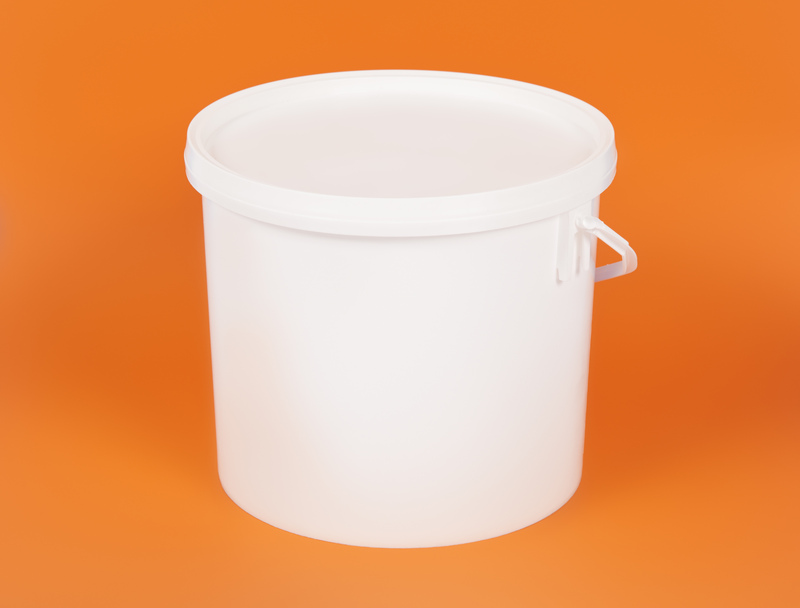Simple Freezer Storage Hacks to Keep It Pristine
Is your freezer a jumbled mess of half-empty containers, mystery meat, and ancient vegetables? If you're like most people, keeping your freezer organized and clean can feel like an endless challenge. Thankfully, with a handful of effective freezer storage hacks, you can transform even the messiest freezer into an organized, pristine space. In this comprehensive guide, we'll reveal essential tips, clever hacks, and everything you need to know about keeping your freezer immaculate and functional.
Why Freezer Organization Matters
Organizing your freezer isn't only about aesthetics--it's about food safety, savings, and reducing food waste. An orderly freezer:
- Prevents food from spoiling prematurely
- Helps you find ingredients quickly
- Maximizes available storage space
- Keeps similar items together for easy meal prep
- Minimizes energy use by allowing cold air to circulate
- Reduces risk of freezer burn
With simple and effective freezer storage techniques, you'll enjoy fresher food, save money, and spend less time searching for dinner ingredients!

Smart Preparation: Set the Stage for a Pristine Freezer
Start with a Thorough Clean-Out
Before you implement new freezer organization ideas, it's crucial to start with a clean slate. Follow these simple steps:
- Empty the freezer completely.
- Inspect all items. Discard anything expired, freezer-burned, or unrecognizable.
- Wipe down all shelves, drawers, and bins with a mixture of baking soda and warm water to remove spills and odors.
- Dry thoroughly to avoid ice build-up.
This quick refresh clears the way for better freezer organization!
Assess and Group Food Items
As you empty the freezer, categorize your food into logical groups. This could include:
- Meats and proteins
- Vegetables and fruits
- Bread and baked goods
- Prepared meals and leftovers
- Snacks and desserts
Grouping foods now pays off when restocking your now-pristine freezer.
Simple Freezer Storage Hacks for Maximum Efficiency
1. Use Clear, Stackable Containers
Invest in clear storage containers that stack neatly so you can see the contents at a glance. This minimizes rummaging, which can increase freezer temperature and lead to partial thawing. Square or rectangular containers are best, as they waste less space compared to round containers.
- *Label containers clearly* with the contents and the freezing date.
- Choose BPA-free plastic or glass containers designed for freezer use.
- Stack heavier items on the bottom and lighter items on top to prevent squishing.
2. Try Freezer Bins and Baskets
Divided freezer bins or baskets create instant order. Use them to keep similar items together, such as smoothie supplies, ice cream treats, or bulk meats. Pull-out bins allow you to access items in the back without disrupting everything in the front.
3. Zip-Top Freezer Bags: Flat-Pack and Save Space
Save freezer real estate by using zip-top freezer bags for items like soups, stews, or chopped veggies. Fill bags, squeeze out the air, and lay them flat to freeze. When frozen, stand them upright like books for a filing-system approach that looks neat and maximizes shelf space.
- *Always label bags* before placing them in the freezer.
- Consider using bag holders or magazine files as DIY organizers for upright storage.
4. Implement First-In, First-Out (FIFO) Systems
Prevent forgotten, wasted food by placing older items in front and new additions in the back--a system known as "First-In, First-Out." This simple hack encourages you to use older ingredients before they spoil. A running inventory on the door or a whiteboard helps track what needs to be eaten soon.
5. Label Everything--Every Time
One of the best freezer storage hacks is to label all containers and bags with the item name and freezing date. Use waterproof labels or masking tape and a permanent marker. Clear labeling reduces "mystery meals" and helps you plan meals more efficiently.
6. Flash Freeze Individual Portions
To avoid large clumps of food, flash freeze items like berries, meatballs, or chicken pieces individually on a tray first. Once frozen solid, store them together in a bag or container. This technique prevents sticking and allows you to grab only as much as you need.
7. Vacuum Seal for Long-Term Freshness
If you frequently store food in the freezer, consider investing in a vacuum sealer. By removing air, you dramatically reduce freezer burn and extend shelf life. This is especially useful for bulk meats, delicate baked goods, and meal prep. If you don't have a vacuum sealer, manually remove as much air as possible from bags before sealing.
8. Use Shelf Liners for Easy Cleanup
Place wipeable shelf liners or even waxed paper on your freezer shelves. These catch drips and crumbs, making cleaning quick and hassle-free. Swap out liners regularly for a consistently pristine freezer.
9. Utilize Ice Cube Trays for Small Items
Portioning tomato paste, pesto, fresh herbs, lemon juice, or baby food in ice cube trays is an ingenious way to prevent waste and save space. Once frozen, pop the cubes into labeled freezer bags for easy use in future recipes.
10. Freeze in Meal-Sized Portions
Divide bulk-cooked meals, raw meats, and even casseroles into meal-sized portions before freezing. This eliminates thawing more than you need and keeps your freezer tidy and clutter-free. It also makes weeknight dinners much easier!
Preserving Your Freezer's Pristine Condition: Maintenance Matters
Regular Cleaning Routines
Set a reminder to clean and declutter your freezer every three to six months. Remove everything, check for expired or freezer-burned foods, and give shelves a quick wipe-down. This habit keeps your appliance fresh, efficient, and pristine.
Check Temperature Settings
Keep your freezer set to 0?F (-18?C) for optimal food preservation. Use an appliance thermometer to monitor accuracy. Consistent, cold temperatures prevent food spoilage and deter bacteria or mold growth.
Manage Ice Buildup
Excess frost or ice can make your freezer less efficient and take up valuable space. Avoid frequent door openings, ensure the door seals are working properly, and defrost your freezer as needed to prevent buildup.
Freezer Storage Tips for Common Foods
Meats and Proteins
- Portion before freezing for easier mealtime prep.
- Wrap with plastic wrap, then foil, or use vacuum-sealed bags for extra protection.
- *Label and date* clearly to avoid confusion.
- Store in the coldest part of your freezer (usually the bottom or back).
Fruits and Vegetables
- Flash freeze small fruits and vegetables on a tray first to prevent clumping.
- Store in portion-sized bags for smoothies, baking, or soups.
- Label with contents and prep date for easy ID.
Baked Goods
- Wrap bread and baked goods tightly in plastic wrap and foil.
- Consider slicing bread before freezing for easy single-serve use.
- Store muffins or cookies in airtight containers or bags.
Prepared Meals and Leftovers
- Cool foods completely before freezing to prevent excess moisture and freezer burn.
- Divide into single-serving or family-sized containers as needed.
- *Label with meal name and date* for easy tracking.
Dairy and Cheese
- Hard cheeses freeze better than soft; shred before freezing if possible.
- Milk can be frozen, but leave room for expansion.
- Yogurt and sour cream can change texture; best used in cooked dishes after freezing.
Bonus Tips: Freezer Storage Mistakes to Avoid
- Don't overload your freezer. Packed freezers don't cool efficiently. Leave space for air circulation.
- Avoid refreezing thawed foods. This can lead to degraded quality and potential health risks.
- Don't ignore strange odors--these could mean spoiled food or a cleaning issue.
- Skip glass containers that are not freezer-safe. They may crack or shatter at low temperatures.
- Don't freeze dairy-rich sauces or gravies unless you're planning to use them in cooked dishes, as separation usually occurs.
Keeping Your Freezer Pristine for the Long Haul
Sustainable Storage Solutions
Consider reusable silicone bags and eco-friendly storage containers to reduce plastic waste. These are durable, freezer-safe, and versatile for various foods. By investing in sustainable storage, you're protecting your food, your wallet, and the environment.
Use a Freezer Inventory App or List
Many people waste food because they forget what's lurking in the back of the freezer. Use a simple notepad, whiteboard, or even a freezer inventory app to track what you have, when it was frozen, and when it should be used by. This handy log makes meal planning smoother and reduces overbuying.
Rotate and Review Monthly
Take 10 minutes at the start of each month to check inventory, shift older foods to the front, and delete or cross off used items. This routine keeps your system working and your freezer looking immaculate all year round.

Frequently Asked Questions: Freezer Storage Hacks
How do I prevent freezer burn?
*Remove as much air as possible* from storage containers or bags, use airtight packaging, and don't leave foods in the freezer for too long. Proper wrapping with multiple layers (like plastic wrap and foil) also helps.
How long can food stay frozen and still be good?
Most meats keep for 6-12 months, fruits and veggies can last up to 8-12 months, and prepared meals are best within 3-6 months. Use your inventory list for quick reference.
What foods should not go in the freezer?
Items like lettuce, cucumbers, eggs in the shell, soft cheese, and some creamy sauces don't freeze well due to texture changes.
How often should I clean my freezer?
Every 3-6 months is ideal, or sooner if you notice spills, strong odors, or ice buildup.
Conclusion: Enjoy Your Organized, Pristine Freezer
With these simple freezer storage hacks, maintaining a pristine freezer is easier than ever. By following the strategies outlined above--from using clear containers and labels to regular cleaning and inventory management--you'll experience less food waste, easier meal planning, and a stress-free kitchen. Incorporate just a few of these tips at a time and you'll soon enjoy a freezer that is as functional as it is immaculate. Say goodbye to mystery meals and hello to freezer storage bliss!



